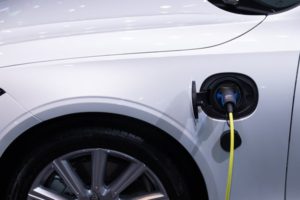

Difference Between NEMA 6-50 And 14-50 Extension Cord
Do you own an electric vehicle, or are you planning to have one soon? If so, you may already be looking into different types of electric vehicle chargers available on the market. Every electric car needs consistent recharging, and you'll need a reliable extension cord that can withstand high current. Extension cords provide convenience when it comes to charging your car. However, you must be careful to buy good cables that are reliable.

You may have come across different types, such as NEMA 6-50 and 14-50 plug. Considering there is more than one option to choose from, sometimes it can be challenging to select the best option that suits your needs.
The electric car market is still in its infancy, and many electric car owners find themselves with little information about parts or even where to purchase them. This is a common situation to many and if you are among them, read on to understand the differences between these extension cords to help you make informed decisions and choose the correct option.
Differences Between NEMA 6-50 and 14-50 Extension Cords
Power Rating (Amps, Volts, and Watts)
Both the 14-50 and the 6-50 are the fastest charging cords since they come with 50 AMP, the highest rating in their category.

While the two cords are relatively similar in many aspects, the NEMA 14-50 level 2 EV charging extension cord yields a maximum current capacity of 50A and carries 250V comfortably without becoming too hot to touch because of the size of the wire gauge. This makes it the most popular EV charging extension cord for most electric vehicle models and brands.
Gauge
Both 14-50 and 6-50 cords use 6 gauge conductor wires, but the 14-50 may come with thicker 8 gauge wires. The larger wires give the 14-50 more durability, and you can use them much longer without getting hot. If your car takes longer to charge, a bigger gauge is better.
Flexibility
Flexibility is an essential consideration for home extension cords. The NEMA 14-50 extension cord is more flexible than the 6-50 since it can handle different plugs and devices. Another reason for the 14-50 popularity is that it comes with a neutral wire function, which allows you to use the same plug for other functions other than just charging your car.

Some plugs don't use all the three wires found in the 14-50, and they only utilize the two as you find in the 6-50. If you have such a plug, you can use any type of outlet.
Cost
The wiring for the two outlets is also different. With the 14-50, the wiring comes in from the bottom, while in NEMA 6-50 comes from the top. This is a design difference, but is it practically important?
Since the 14-50 has three prongs, it requires three wires instead of two, as with the 6-50. This difference makes the wiring for the former costlier, especially if you have a long run from the circuit panel to the outlet. So, in the case of a log run, you may find the 6-50 economical.
Prices might fluctuate, but you will find the wiring for the 6-50 about 30% cheaper than the 14-50. The 6-50 outlet is also about 50% cheaper since the 14-50 is newer and highly demanded. If you're budget conscious, 6-50 is the way to go since there is no technical difference in their functionality.
Design
When you look at the two cables at the end connecting to the wall socket, you will notice that the 14-50 has four prongs while the 6-50 has three. This can be confusing, but one prong is the ground, translating to three and two prongs, respectively. Technically, the difference between the 14-50 and 6-50 is that the 6-50 has no neutral; it only has the two "hots" and the ground.

The 14-50 has two prongs that provide 240 volts, each giving out 120V. The third prong is neutral. Most RVs come with this type of cord, so you should be familiar with the 14-50 design if you already own an RV. If you want to use an EV charger other than the one that came with your car, the 14-50 will be a better option because it can go with many plugs.
Installation
The 6-50 outlet only comes with two prongs and the ground, making it simpler and easier to install. While the installation process is the same for both the 14-50 and the 6-50, the latter requires fewer wires.
Despite the differences, both outlets only work with copper wiring. So, during installation, you should not use aluminum or any other type of wires for safety reasons.
Conclusion
The type of charging cord has little impact on your charging experience as long as they're of the same level. Both NEMA 14-50 and 6-50 are level 2 EV charging extension cords despite the differences. This makes them both at least 50% faster than level one cords.
Both 14-50 and 6-50 cords are safe, modern, and powerful plugs. However, they both use 240V and will not work if your home has a 120V supply. So, it's advisable to consult a qualified electrician before installing these cords at home.
